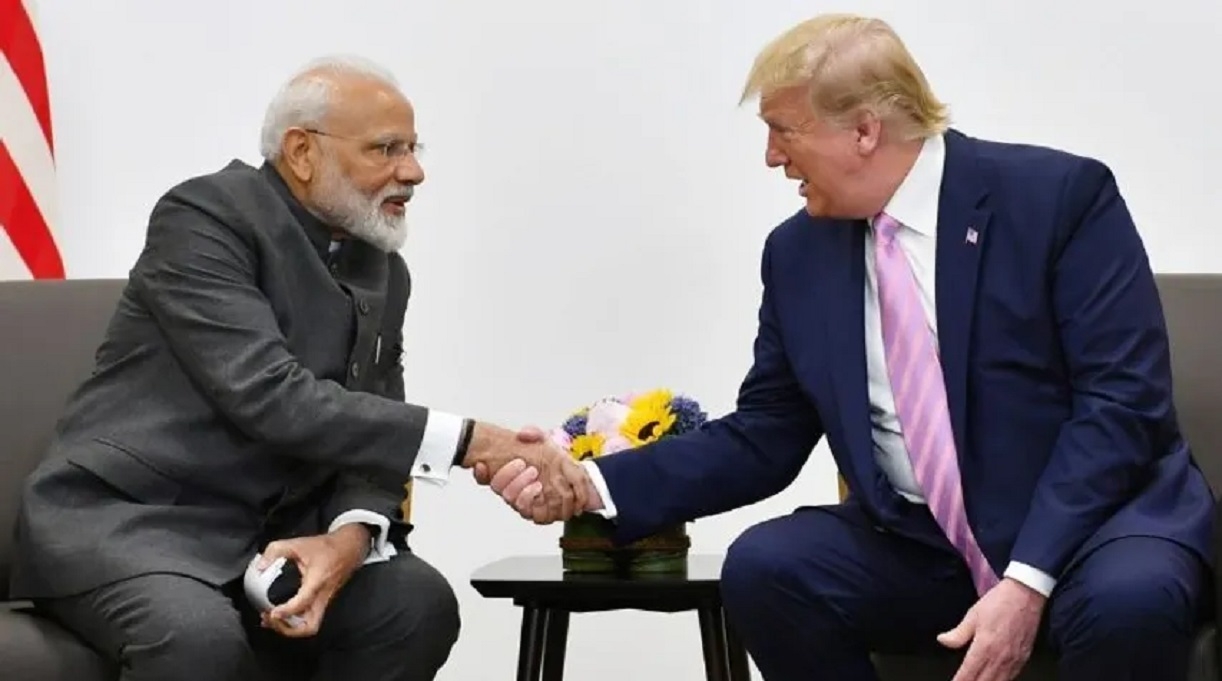Reciprocal Duties May Not Impact Right Away, But Could Affect Sentiment
28 Feb 2025 17:55:51

New Delhi:
The Reciprocal Tariff Plan, announced on February 13 by the Trump
administration, allows the US to raise tariffs on countries with a trade
surplus. If implemented, it could significantly impact Indian exports.
As per the
data, US is India's largest export destination, with annual exports of USD 77.5
billion which is approximately 18% of India's total exports while the country's
annual merchandise trade surplus with the US stands at USD 35 billion.
Impacted Sectors
Sectors
with higher export exposure to the US include electronics, gems, jewellery,
chemicals, and pharmaceuticals. Recent report on US tariff made by Care Rating
says that the weighted average tariff on Indian exports to the US is
approximately 3.5%, while the weighted average tariff on US exports to India is
around 11.5%.
Recently
India has lowered customs duty on imported cars, motorbikes, beverages and
electronics. It still remains uncertain whether the US will implement a uniform
additional tariff of 8% across all goods or if the tariff will vary by product.
The report indicates that the adverse impact of reciprocal tariffs could be
partially mitigated by the depreciation of the rupee against the dollar, making
Indian exports more competitive.
GDP Calculation
It's
calculation suggests that the direct export loss due to reciprocal tariffs
could be USD 3.2 billion annually which is approx 0.1% of total country's GDP.
The impact could be reduced as India works to reduce customs duties on key
imports from the US and diversifies its export destinations. However, there
will also be an indirect impact on India as the trade war lowers overall global
trade and GDP and creates uncertainties in the external environment, adds the
report.
It also
suggests that It is essential to consider that the threat of reciprocal tariffs
may be a negotiation tactic designed to secure more favourable trade/security
deals.
Another
report prepared by Global Trade Research Initiative (GTRI) says that if the
U.S. imposes a uniform tariff, Indian exports could face an
additional
tariff of 4.9%, compared to the current 2.8%.
Sectoral Impact
According
to this report Indian farm exports would be hit hardest, with shrimp, dairy,
and processed foods facing tariffs of up to 38.2%. while on the industrial
goods front Pharmaceuticals (10.9% tariff), diamonds & jewelry (13.3%), and
electronics (7.2%) face major risks. Sectors with minimal impact Sectors would
be petroleum, minerals and garments may be unaffected due to existing U.S.
tariffs.
GTRI
Founder Ajay Srivastava suggests that India may propose a zero-for-zero
strategy to the US, eliminating tariffs on 90% of industrial goods to prevent
aggressive tariff hikes. If the U.S. rejects India’s offer, India should refuse
unfair concessions and consider countermeasures, similar to China’s response to
Trump’s tariffs, he added.
According
to Ajay Srivastava, India must negotiate strategically and prepare
countermeasures to minimize the impact of these tariffs while ensuring that
industries remain competitive in the U.S. market.